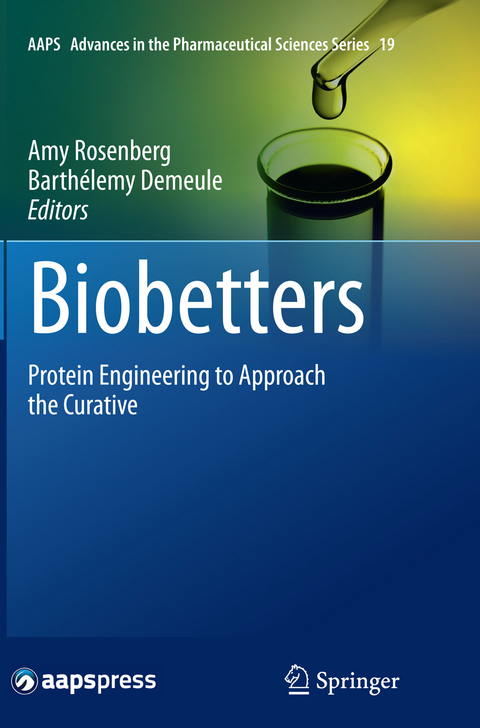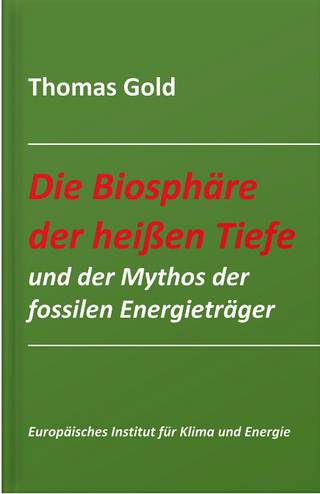“Biobetters: Protein Engineering to Approach the Curative” discusses the optimization of protein therapeutic products for treatment of human diseases. It is based on the fact that though numerous important therapeutic protein products have been developed for life threatening and chronic diseases that possess acceptable safety and efficacy profiles, these products have generally not been reexamined and modified for an improved clinical performance, with enhancements both to safety and efficacy profiles. Advances in protein engineering, coupled with greatly enhanced understanding of critical product quality attributes for efficacy and safety, make it possible to optimize predecessor products for clinical performance, thereby enhancing patient quality of life and with the potential for great savings in health care costs. Yet despite such knowledge, there is little movement towards such modifications. This book examines engineering protein therapeutic products such that they exhibit an optimal, not just an adequate, clinical performance profile. Two product classes, therapeutic enzymes for lysosomal storage diseases (enzyme replacement therapies, ERT) and monoclonal antibodies (mAbs), are used as examples of what modifications to such proteins could be made to enhance clinical performance, “closer to a cure” as it were. For ERT, the key to optimizing clinical performance is to ensure the ERT is endowed with moieties that target the protein to the relevant target tissue. Thus, for Gaucher Disease, our best example of how to optimize an ERT to address a disease that manifests in specific target tissues (macrophages and monocytes), the enzyme has been extensively modified to target macrophages. For diseases such as Pompe Disease, largely a disorder of muscle, optimal performance of ERT will depend on endowing the enzyme with the ability to be taken up via the Mannose 6 Phosphate Receptor, and so one of the chapters in the book will discuss such approaches.Moreover, a major failure of biotechnology based products is to gain access to the CNS, a key target tissue in numerous diseases. Thus, a chapter has been devoted to strategies to access the CNS. Additionally, immune responses to therapeutic proteins can be highly problematic, eliminating the efficacy of life saving or highly effective protein therapeutics. This is especially poignant in the case of Pompe Disease wherein great improvement in muscle strength and functionality is lost following development of an immune response to the ERT with consequent patient deterioration and death. Thus, a chapter regarding protein engineering, as well as other non-clinical approaches to diminishing immunogenicity is a valuable part of the book. Monoclonal antibodies (mAbs) can be engineered to bind targets relevant to a wide variety of diseases; binding affinity, however, is only part of the equation and one of the chapters will present a molecular assessment approach that balances affinity with pharmacokinetics and manufacturability. As with other proteins immunogenicity can be problematic, being responsible for loss of efficacy of anti-TNF mAbs, often after prolonged successful treatment. The authors will also share their perspective on the consequences of physico-chemical modifications occurring to mAbs once they reach the circulation or their target, a research area open to further development from a protein engineering as well as analytical perspective. This book will also discuss novel platforms for protein therapeutics, technologies that exceed mAbs with respect to potency, and hence, potentially efficacy. These platforms consist largely of repeat domain proteins with very high affinity for their target ligands, but while potentially more efficacious, immunogenicity may be a major problem limiting use. The economics surrounding the issue of biobetters is another high-profile issue - this final chapter will explore the incentives and disincentives for developingbiobetters and consider incentives that might make their pursuit more rewarding.
Dr. Amy Rosenberg received her M.D. from Albert Einstein College of Medicine, trained in internal medicine and infectious diseases and is Board Certified in Internal Medicine. She was a post-doctoral fellow in Al Singer’s Laboratory in the NCI before coming to CBER, FDA. She is Director of the Division of Therapeutic Proteins, a division that regulates diverse protein therapeutics, including enzyme replacement therapies, hematologic and somatic cell growth factors and immunomodulatory agents including interferons and interleukins. Her particular interests are in tolerance induction in diverse clinical settings including autoimmunity, therapeutic protein immunogenicity and transplantation.
Dr. Barthélemy Demeule obtained his Ph.D. at the University of Geneva, Switzerland, where he started his investigations on the physico-chemical stability of biopharmaceuticals. After a postdoctoral work at Genentech, Inc. focused on the effect of the in vivo environment on antibody-antigen interactions, he stayed in the company where he held positions of increasing responsibilities. He currently leads a group of scientists responsible for the pharmaceutical development of monoclonal antibodies in the last phases of clinical development. He also serves on the editorial board of the European Journal of Pharmaceutics and Biopharmaceutics.
Introduction.- Targeting glucocerebrosidase to macrophages for effective treatment of patients with Gaucher disease: setting the paradigm of a "fit for purpose" approach to enzyme replacement therapy.- Challenges of Enzyme Replacement Therapy: Poor tissue distribution in lysosomal diseases using Pompe disease as a model.- Muscle targeting.- Blood-Brain Barrier Targeting of Therapeutic Lysosomal Enzymes.- Novel Methods for Addressing Immunogenicity in Therapeutic Enzymes.- Structure of monoclonal antibodies.- Prediction of aggregation in vivo by studies of therapeutic proteins in human plasma.- Effect of Hydrolytic Degradation on the In Vivo Properties of Monoclonal Antibodies.- Oxidation of proteins in the in-vivo environment: what we know; what we need to study and potential mitigation strategies.- Molecular assessment: balancing affinity, PK and manufacturability.- Perspectives on engineering biobetter therapeutic proteins with greater stability in inflammatory environments.- Antibody-like molecules designed for superior targeting and pharmacokinetics.- Alternative protein scaffolds as novel biotherapeutics.- Current strategies for pharmacokinetic optimization.- Biosimilar and Biobetter Scenarios for the US and Europe: What Should We Expect?.- Regulatory considerations for approval of biobetter products.
| Erscheint lt. Verlag |
22.10.2016
|
| Reihe/Serie |
AAPS Advances in the Pharmaceutical Sciences Series ; 19
|
| Zusatzinfo |
22 Illustrations, color; 28 Illustrations, black and white; XV, 378 p. 50 illus., 22 illus. in color. |
| Verlagsort |
New York |
| Sprache |
englisch |
| Maße |
155 x 235 mm |
| Themenwelt
|
Medizin / Pharmazie ► Pharmazie |
| Naturwissenschaften ► Biologie ► Biochemie |
| Naturwissenschaften ► Chemie ► Technische Chemie |
| Technik |
| Schlagworte |
drug targeting • Immunogenicity • monoclonal antibodies • Pharmacokinetics • therapeutic enzymes |
| ISBN-10 |
1-4939-4994-2 / 1493949942 |
| ISBN-13 |
978-1-4939-4994-6 / 9781493949946 |
| Zustand |
Neuware |



